#abies fraseri
Text
explained to my sister how the christmas tree (abies fraseri/fraser fir) was much more widespread across eastern north america during the ice age when temperatures were cooler but that after the earth's precession changed the climate warmed up and they ended up only being able to survive in higher altitudes (like in the appalachians today). and she sent me this

13 notes
·
View notes
Text

Remember Abies fraseri? 🎄
Fraser fir 🎄
10 notes
·
View notes
Text
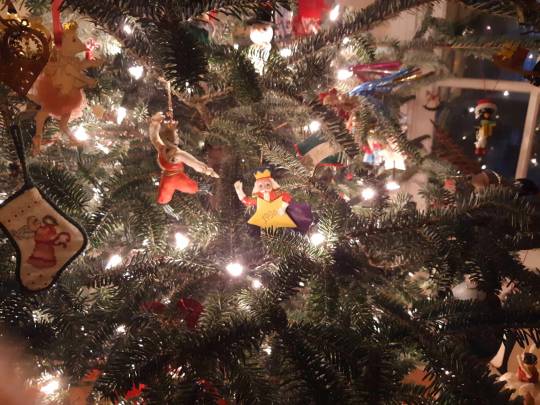
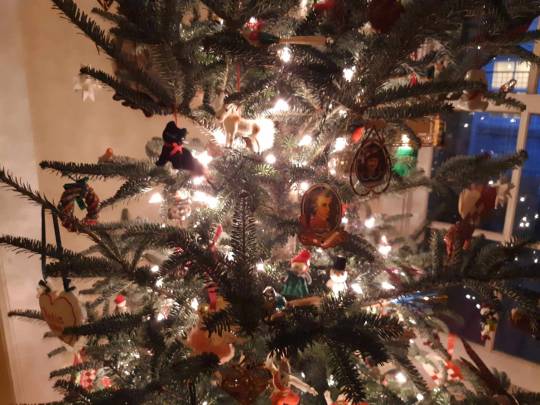

Merry Christmas from Katia Plant Scientist! I hope your day is jolly, however you like to spend it.
Here are a few views of my Christmas Tree. The Fraser Fir (Abies fraseri) , also spelled Frasier Fir, is native to the Appalachian Mountains of the USA and is one of the most popular pine species for Christmas trees in North America. The elegant symmetrical pyramidal shape, closely packed needles with blunt ends, and pleasant pine scent makes them perfect as the centrepiece of Christmas home decor. However, these traits are really evolutionary adaptations to survive cold winters. The needles' compact shape with less surface area and a thick waxy cuticle protects them against frost damage while the conical shape of the tree helps snow fall off the branches.
Take a moment to appreciate nature's wonders this Christmas.
#botany#plants#katia_plantscientist#gardening#christmastree#christmas#happyholidays#trees#plantidentification#christmasdecor#fraserfir#pinetree#firtree#evergreen#pines#pineneedle#plantanatomy#plantbiology#plantscience#plantfacts#christmasideas
#katia plant scientist#botany#plant biology#plants#plant science#fraser fir#fir trees#conifers#christmas trees#trees#christmas decoration#christmas decorating trends#classic christmas#christmas ornament#merry christmas
1 note
·
View note
Text
Insecticides and pesticides used on fraser firs

#Insecticides and pesticides used on fraser firs full
#Insecticides and pesticides used on fraser firs code
tip moth, Douglas-fir tussock moth, eastern spruce. In fact, in talking with county agents, we estimated that at least 4,000 acres of Fraser fir Christmas trees were treated in the fall and will hopefully skip a twig aphid treatment. Contact insecticides may not reach leafminers in their tunnels and. We comply with the Federal Trade Commission 1998 Children’s Online Privacy Protection Act (COPPA). Many growers treated last fall with insecticides and are hoping to get twig aphid control this spring from those fall sprays. Germinating Fraser fir seed and young seedlings with expanded cotyledons.
#Insecticides and pesticides used on fraser firs code
The 4-H Name and Emblem have special protections from Congress, protected by code 18 USC 707. contained specific recommendations for herbicides and pesticides as well as. Reference to commercial products or trade names does not imply endorsement by MSU Extension or bias against those not mentioned. Chlorpyrifos 4E insecticide forms an emulsion when diluted with water and is suitable for use in all conventional spray equipment. This information is for educational purposes only. Quentin Tyler, Director, MSU Extension, East Lansing, MI 48824. As we learn more, IPM practices will continue to become more efficient and reduce pesticide use still further. This practice of ‘pulling’ seedlings declined as seed production allowed for growing trees in nurseries. The balsam woolly adelgid (BWA) is a seri-ous pest of true firs, Abies spp., and annually kills thousands of Fraser fir (Abies fraseri Pursh.) in the Southern Appalachians. FRASER FIR Product: Christmas trees Plant parts used: Seeds and seedlings Nontimber Uses Originally, Fraser fir seedlings were dug from natural forests to be replanted in Christmas tree farms and grown until merchantable. Pest management surveys of growers have documented that pesticides have been reduced by almost 75 from 2000 through 2013. Keywords: Adelges picea, Fraser fir, Abies fraseri, insecticides, insecticidal screening, field bio-assay. Issued in furtherance of MSU Extension work, acts of May 8 and June 30, 1914, in cooperation with the U.S. The good news is that growers are adapting IPM and reducing pesticide use in NC Fraser fir Christmas trees. DDT was first synthesized in 1874 by the Austrian chemist Othmar. Michigan State University Extension programs and materials are open to all without regard to race, color, national origin, gender, gender identity, religion, age, height, weight, disability, political beliefs, sexual orientation, marital status, family status or veteran status. Originally developed as an insecticide, it became infamous for its environmental impacts.
#Insecticides and pesticides used on fraser firs full
MSU is an affirmative-action, equal-opportunity employer, committed to achieving excellence through a diverse workforce and inclusive culture that encourages all people to reach their full potential.

0 notes
Photo


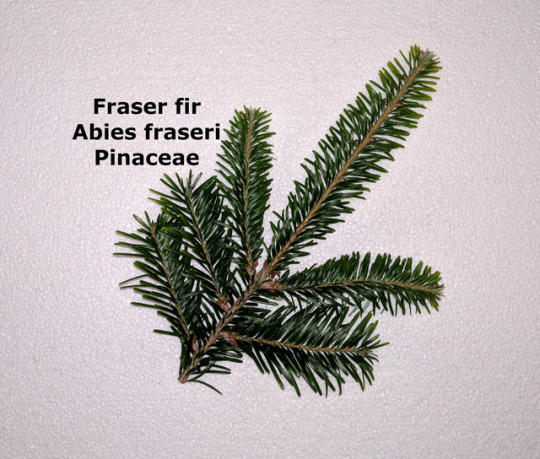
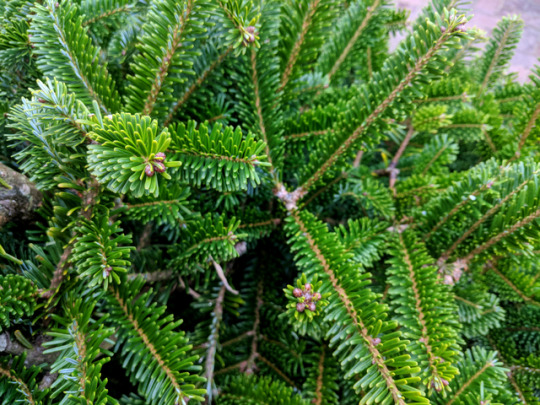
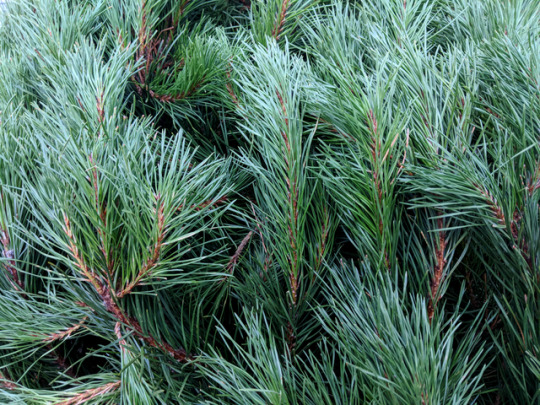

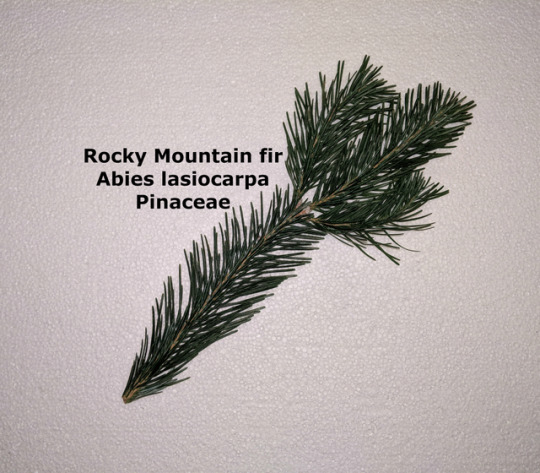

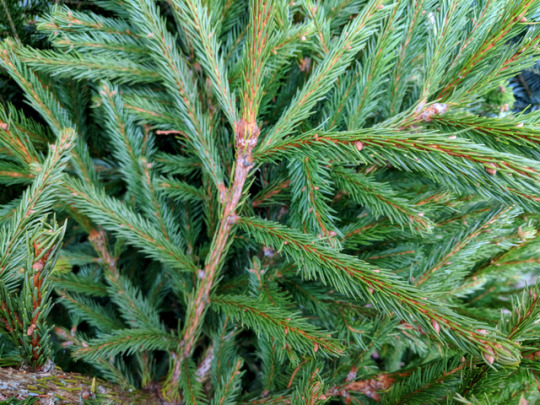
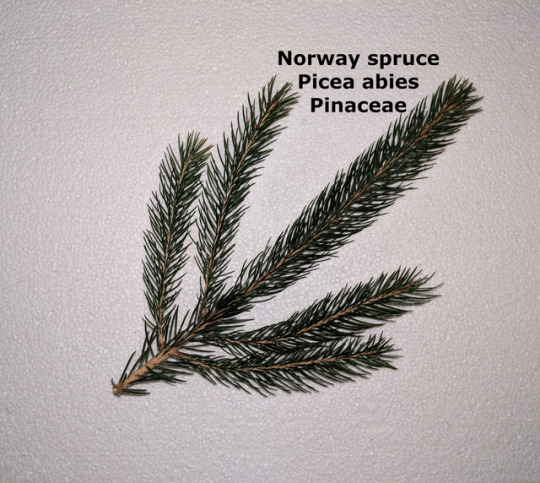
Know your festive conifers
I mentioned before that I started working in a garden centre -I’m so happy my change-of-career plans are already beginning to work!- and today it’s actually been a whole month. This first month there has been decisively marked from the very beginning by the fact Christmas is approaching: my first day happened to be when the main delivery of Christmas trees arrived, so it was entirely spent unloading hundreds of conifers, which we then freed from their nets, separated, measured and finally positioned in their pens during the following days.
Needless to say, I’ve learnt a lot about the most common Christmas trees you could find in a garden centre in the UK this time of the year. I’ve also ended up reading briefly about the tree farming industry and what it entails in the UK, rest of Europe and America with their differences. But this is not meant to be a post about a tradition which is quite new to me -decorating a real cut tree is not nearly as popular in Italy- its history or the industry it supports, so let’s get to the trees.
From top to bottom, they are ordered by their popularity as I’ve experienced it, although most of the stock was of the first two species and we only offered a few of the other three.
1. Nordmann fir Abies nordmanniana, Pinaceae
Very large tree native to the southern and eastern coast of the Black Sea. It’s considered the favourite and the best seller in the UK for two main reasons: it retains its needles, which are soft and have a notched tip, and its spaced layers of symmetrical, almost horizontal, sturdy branches are ideal to accommodate heavy or large ornaments. Especially when young and under 6ft it can look quite wide and bushy at the bottom with a sparse top and often a very long and straight leader.
2. Fraser fir Abies fraseri, Pinaceae
Medium-sized tree native to the southeastern Appalachian Mountains. Also very popular, mostly because it’s sheared in the field to retain a conical shape and this results in a slimmer bottom, ideal for small spaces, and high density of soft branches, which work better with small, light ornaments. The stem and branches seem to grow in a sinuous fashion and the tree often has more than a single central leader tip, which is generally not straight, but twisty too. Its citrus-y sent and the ability to retain its needles help making it a popular choice.
3. Lodgepole pine Pinus contorta, Pinaceae
Medium to large tree or shrub, depending on the subspecies, native to western and north-western North America. As the only Pinus in the list, it looks rather different from the other trees and decorating it can be a challenge, people seem to either love it or hate it, so we only stocked a handful of them. It tends to be quite bushy and, as the name suggests, the trunk can often be twisted. It smells like clean pine forest and is very good at holding its needles.
4. Rocky Mountain fir Abies lasiocarpa, Pinaceae
Generally medium-sized tree which shares its native area with the lodgepole pine in north-western North America. This was a novelty species at the garden centre and we only stocked a few large ones. Most people seemed to love its imposing, but airy and symmetrical structure and blue-grey hue and it’s probably my personal favourite. Its scent is aromatic and as interesting as the colour.
5. Norway spruce Picea abies, Pinaceae
Large tree native to an area spanning from the mountains of southern Europe to Siberia. Most people recognise it as the traditional, old-school Christmas tree, however it has now fallen out of fashion as the worst performing in the list when it comes to retaining its needles. For this reason we mostly stocked pot-grown trees of this species, and just a handful of small, cut ones. The short, thin needles give it a feathery look compared to the others and its structure is similar to that of the Nordmann fir.
Now, just out of curiosity, I’d love to see lists made by my counterparts in the rest of the world! Also, if you have bought a tree, what species is it?
#nordmann fir#abies nordmanniana#fraser fir#abies fraseri#lodgepole pine#pinus contorta#rocky mountain fir#abies lasiocarpa#norway spruce#picea abies#pinaceae#plant identification#plant photography#botany#trees#plantblr#garden centre#work#gardeners on tumblr#conifers#christmas#christmas tree#tree farming#scotland#horticulture
819 notes
·
View notes
Text
Abies fraseri 'Denny's Doll' Fraser Fir
A nice dwarf with rich, silver-green foliage; found by the late Dennis Dodge of Bethlehem Nursery Check Out:

0 notes
Text
...You go to the library
This fanfiction is part of a series, access the beginning here.
The library is quiet, and you inhale deeply as the scent of old books greets you. You feel the magic and knowledge these books contain humming around you. Or perhaps it is the dirty blond haired boy, humming in the aisles.
"Neville?" You stick you head through one of the empty spaces in the shelf, through to the other side. Poor Neville nearly jumps out of his skin as he searches for where your voice is coming from. "I didn't know you were staying over the holidays!" You say, excited to have found someone else you know who will be here for Christmas.
"I didn't know you were staying either y/n!" Neville responds eagerly. You walk together through a few more aisles, earning glares Madam Pince for your chatting. Since Neville is in the year above you, you don't get to see him as much as you would like. He does tutor you for herbology though.
"Do you want to see the tree I've been growing for Christmas?" He asks eagerly. You nod, and take his hand as he leads you through various corridors into a room you've never seen before. You laugh as he opens the small door into an enormous greenhouse.
"I never knew this was here!" You say with glee.
"It often isn't," Neville responds mysteriously before explaining. "This is the legendary room of requirement." You laugh again as you close your eyes and wish for Christmas carols to begin playing. To your delight, Jingle Bell Rock begins to play throughout the room. You close your eyes again and wish for a plate of Christmas cookies. Nothing happens this time.
"Aw, it doesn't do food. So I can't live here forever," You declare dramatically. Neville laughs as he continues to fiddle with certain light settings, and a large velvety cloth.
"Hermione's mentioned that before. Some transfiguration law or other," You nod, and sit down on a conveniently placed cushion in front of the masterpiece that Neville has covered with a sheet.
"So is this a magic christmas tree?" You inquire.
"Basically. It's known as a Medeis Abies fraseri, scientifically speaking." He unviels the tree and you gasp. Standing up, you move closer to inspect it's branches.
There is an ethereal glow surrounding the tree, despite the fact that it lacks lights. And it seems to sway and dance in time to the music. Not obviously, but enough to make you notice how festive it is.
"It's amazing!" You cry, hugging Neville in glee. Christmas is your favorite holiday, and you can hardly believe that a Christmas tree could be improved upon by so much. "It must have been a huge challenge to grow," Nevilly blushes, too humble to admit the hours he poured into it.
"I need to show it to Dumbledore before the feast tomorrow," He attempts to change the topic. You nod, glancing at your watch.
"We better get some sleep then," You suggest. Just as you're about to leave the room you feel your feet freeze.
"Mistletoe," You breathe. Magic mistletoe is the worst kind, because you have to stay until you either kiss the person, or someone trades in for you. However, it is highly effective at creating new couples. Neville nods, and leans closer shyly.
You softly meet his lips. The room of requirement certainly worked tonight.
12 notes
·
View notes
Text
101歐美聖誕市集呈現各國聖誕風情 頂級超市《JASONS》玩味聖誕
白雪紛飛覆蓋大地,家家戶戶燈光閃爍,火爐前、餐桌上歡笑聲環繞,充滿期待的禮物聚集於樹下…。聖誕節,這個大家都喜愛的歡欣節日在歐美各國發展出不同的習俗與歡慶方式。為了呈現道地的歐風聖誕,JASONS MARKET PLACE除了在佳餚、美酒和交換禮物等聖誕節經典元素上精心選品外,也特別打造歐美必備的聖誕市集、獨家引進美國家庭不可或缺的新鮮綠樹,並將歐美不同國家的聖誕餐習俗介紹給台灣的民眾。
(more…)
View On WordPress
0 notes
Text
Frasier Fir
By Mason Heberling
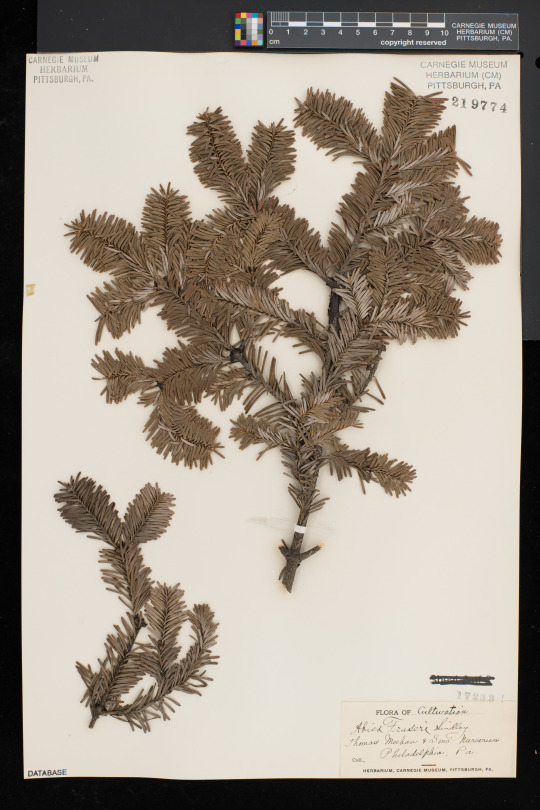
Collected on some day, probably between 101-122 years ago.
Around 25-30 million cut trees are sold each year in the United States for the holidays. The popularity of certain species for this use has changed through time. Many different evergreen conifer species are cultivated in the US for decorative use during the holidays. Needle length, softness, retention, color, and even scent vary by species or variety. Similarly, branching characteristics and branch strength differs by species. Plus, some species grow faster and easier than others, which means some species are cheaper.
This specimen of Fraser fir (Abies fraseri) was collected in Philadelphia at the Thomas Meehan & Sons Nursery. The person who collected this specimen and the date of collection are unknown. Thomas Meehan immigrated to the United States from England in 1848 and started a landscaping business. With his three sons, he started the Thomas Meehan & Sons Nursuries in 1896. The nursery was unique in that it specialized in native trees and shrubs, unlike most nurseries that focused on European and Asian varieties (still very common today). The nursery closed in 1916.

Fraser fir is currently one of the most popular Christmas trees. It is known for its dark green color, soft needles, stiff branches (great for hanging heavy ornaments), and has good needle retention. Unfortunately, native to the Southern Appalachians, Fraser fir isn’t the easiest to grow in Pennsylvania.
Before farms began cultivating trees for that purpose in the early 20th century, people just went to the woods to cut down their tree for the holidays. Some of the earliest Christmas tree farms in the US started in Indiana County, PA as early as 1918. Many farms in the region turned their fields into Christmas tree farms as it became profitable. By 1960, more than 1 million trees were harvested per year in Indiana County alone. The harvest in Pennsylvania has declined for several reasons, including increased popularity of artificial trees and consumer interest in Frasier fir trees (grows slower in PA than farms in North Carolina). However, Pennsylvania is still among the top five states in terms of both number of working Christmas tree farms and trees harvested. According to the National Christmas Tree Association, 31,577 acres in Pennsylvania are used as Christmas tree plantations. Many of the Christmas tree lots in southwestern PA get their trees from farms in Indiana county.
Check back for more! Botanists at the Carnegie Museum of Natural History share digital specimens from the herbarium on dates they were collected. They have embarked on a three-year project to digitize nearly 190,000 plant specimens collected in the region, making images and other data publicly available online. This effort is part of the Mid-Atlantic Megalopolis Project (mamdigitization.org), a network of thirteen herbaria spanning the densely populated urban corridor from Washington, D.C. to New York City to achieve a greater understanding of our urban areas, including the unique industrial and environmental history of the greater Pittsburgh region. This project is made possible by the National Science Foundation under grant no. 1801022.
This specimen image is now online and publicly available here.
35 notes
·
View notes
Text
Evergreen Trees Nursery in UK- Greenhills Nursery
Abies fraseri, also called southern balsam fir and is a small- to medium-size,one of the most popular Christmas trees. Abies fraseri is an evergreen tree that grows on moist, cool slopes on top of the highest of the Appalachian Mountains at a fast rate.
0 notes
Text
Eastern North America's Temperate Rainforest
I have often remarked that working in the southern Appalachian Mountains during the summer feels more like working in a rainforest than it does an eastern deciduous forest. Lots of rain, high humidity, and a bewildering array of flora and fauna conjure up images of some far away jungle. Only winter can snap this view out of ones head. I recently learned, however, that these feelings are not misplaced. Indeed, this region of southern Appalachia is considered a temperate rainforest.
These mountains are old. They arose some 480 million years ago and have been shaping life in this region of North America ever since. Another thing these mountains are quite good at is creating their own weather systems. Here in southern Appalachia, warm, wet air from the Gulf of Mexico and western Atlantic blows northward until it hits the Appalachian Mountains. The mountainous terrain comprising parts of Pisgah, Nantahala, and Chattahoochee National Forests has been referred to as "the Blue Wall" and is responsible for the unique conditions that created this temperate rainforest.
As this air rises over their peaks, it begins to cool. As it does, water in the air condenses. This results in torrents of rain. On average, this area receives anywhere from 60 to 100+ inches of rain every year. The Appalachian temperate rainforest is second only to the Pacific Northwest in terms of rainfall in North America. All of this water and heat coupled with the age and relative stability of this ecosystem over time has led to the explosion of biodiversity we know and love today.
Life abounds in the southern Apps. The plant diversity can be rather intimidating as species from the north mix with those coming up from the south. For instance, there are more tree species in these mountains than in all of Europe. Rates of endemism in these mountains, both in terms of flora and fauna, are remarkable. There are relics of bygone eras that never expanded their range following repeated glaciations. What's more, a multitude of species combinations can be found as you go from low to high elevations.
At lower elevation, forests are dominated by American beech (Fagus grandifolia), yellow birch (Betula alleghaniensis), maple (Acer spp.), birch (Betula spp.), and oak (Quercus spp.). Magnolias cover the humid coves. Mid elevations boast birches, mountain ash (Sorbus americana), and mountain maple (Acer spicatum). High elevations contain fraser fir (Abies fraseri) and redspruce (Picea rubens). Both the understory and the the mountain balds are home to a staggering array of different Heaths (Ericaceae). From Rhododendrons to azaleas and mountain laurels, the colors are like those lifted from an abstract painting. The forest floor is where I focus most of my energy. It is hard to capture the diversity of this habitat in only a few paragraphs. What I can say is that I haven't even scratched the surface. It seems like there is something new to see around every corner.
The point I am trying to make is that this region is quite special. It is something worth protecting. From development to mining and changes in temperature and precipitation, human activities are exacting quite a toll on the Appalachian Mountains. The system is changing and there is no telling what the future is going to look like. Conserving wild places is a must. There is no way around it. Luckily there is a reason people love this place so very much. There are a lot of dedicated folks out there working to protect and conserve everything that makes southern Appalachia what it is. Get out there, enjoy, and support your local land trust!
Further Reading: [1]
#Appalachian temperate rainforest#Appalachian Mountains#biodiversity hotspot#Southern Appalachia#temperate rainforests
103 notes
·
View notes
Photo

Frasers Balsam Fir, abies fraseri - high resolution image from old book.
0 notes
Photo
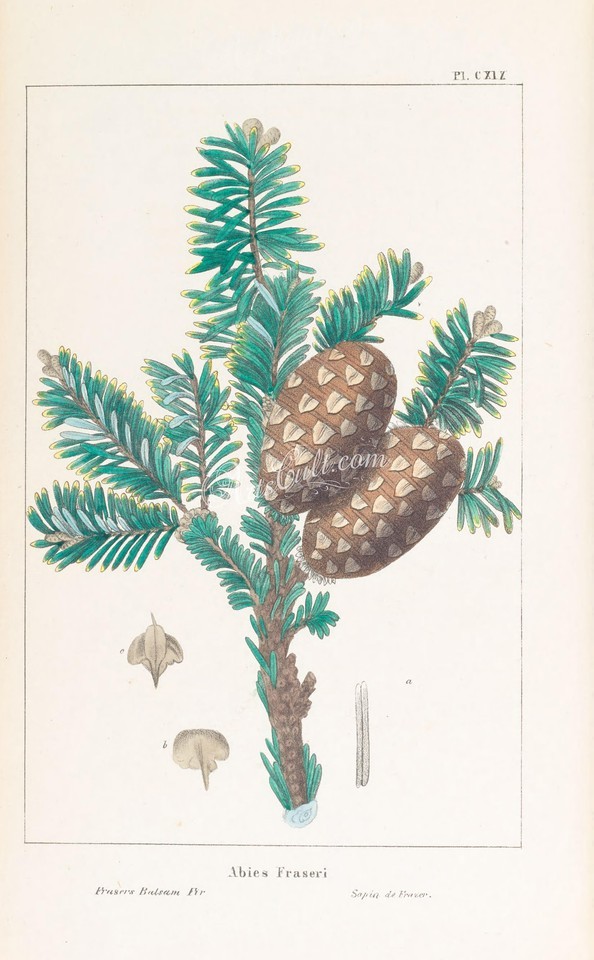
Frasers Balsam Fir, abies fraseri - high resolution image from old book.
0 notes
Text
Geographical variability of monoterpenes from Abies balsamea and A. fraseri
http://dlvr.it/NjvS7R
0 notes
Video
2 notes
·
View notes
